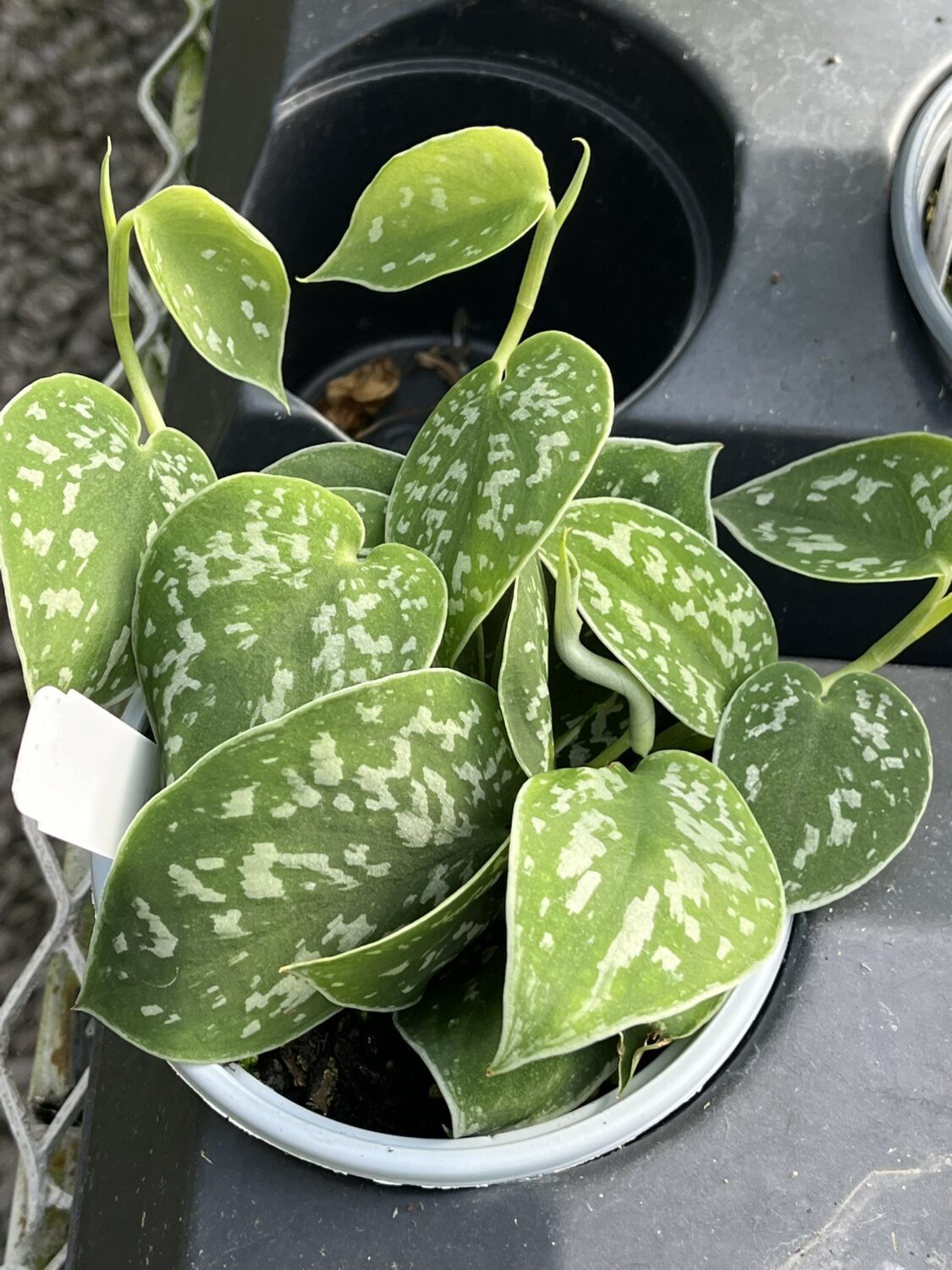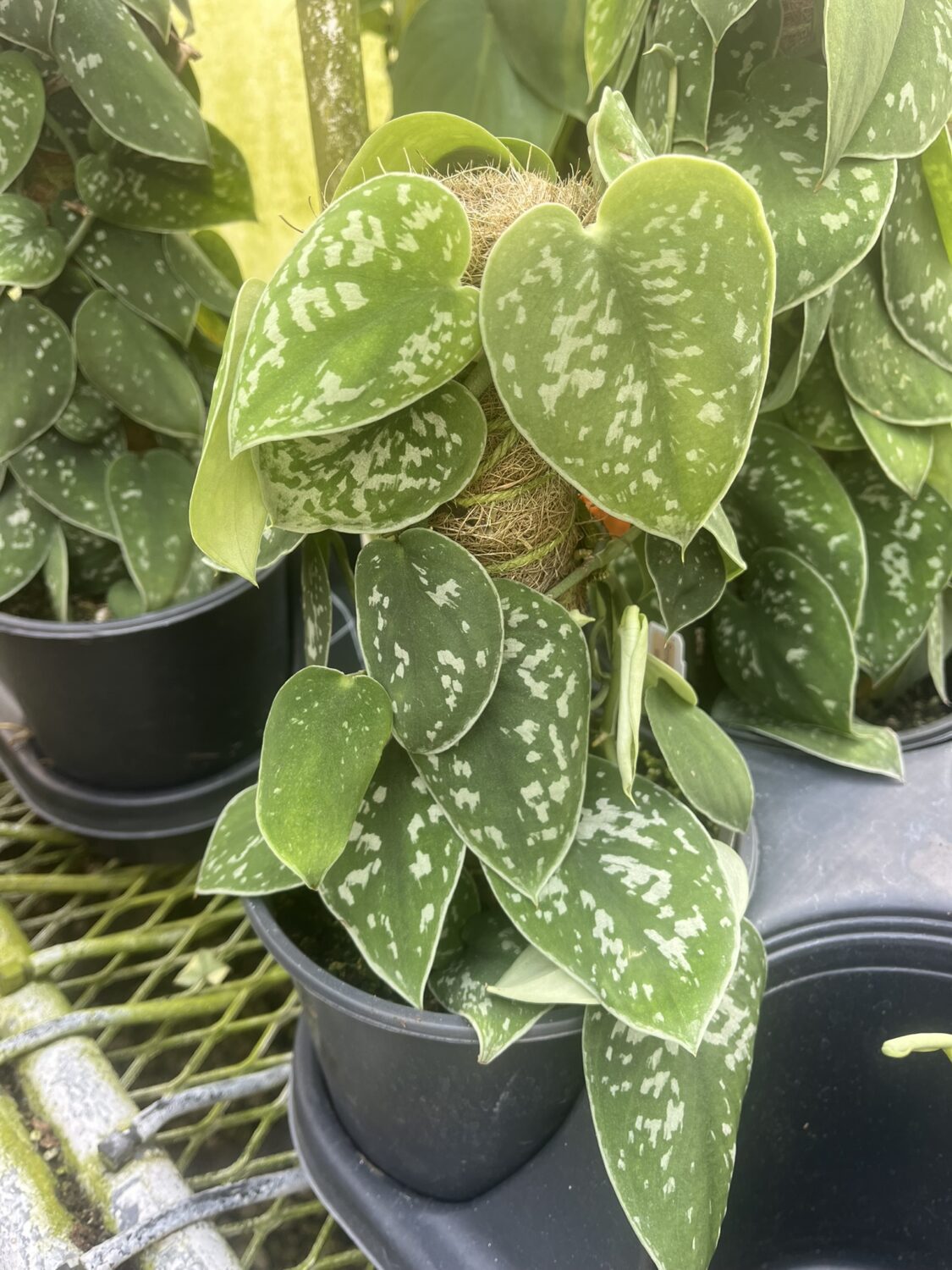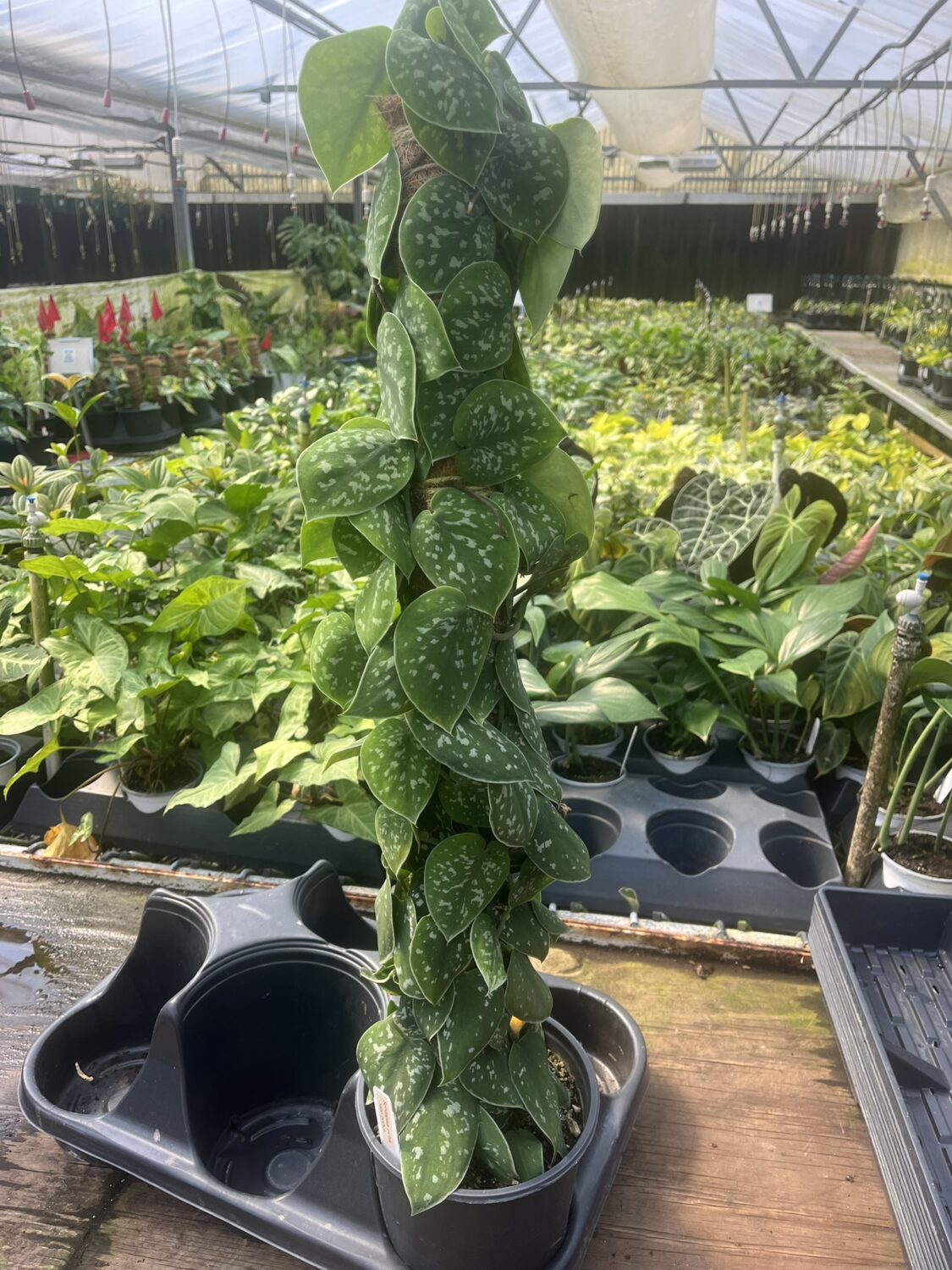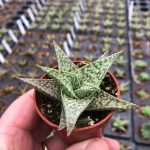Scindapsus pictus ‘Black Satin’
Price range: $9.99 through $19.99
Hardiness Zone 9+
Discount per quantity
| Quantity | 3 - 8 | 9 - 14 | 15+ |
|---|---|---|---|
| Price | Price range: $9.69 through $19.39 | Price range: $9.39 through $18.79 | Price range: $8.99 through $17.99 |
| % Discount | 3% | 6% | 10% |
Description
Scindapsus pictus ‘Black Satin’ Care Guide
Scindapsus pictus ‘Black Satin,’ often called Satin Pothos, is a rare and elegant houseplant admired for its velvety, nearly black leaves with a soft metallic sheen. Native to the tropical forests of Southeast Asia, this plant belongs to the Araceae family and is beloved for its dramatic foliage and versatile growth habit. It trails beautifully from hanging baskets, climbs poles with ease, and looks stunning cascading from decorative pots.
This variety stands out from other Scindapsus with its understated dark tones, making it perfect for modern and minimalist interiors. Beyond its beauty, it is surprisingly low-maintenance and adaptable, making it a favorite for beginners and collectors alike.
Planting and Propagation
Propagation Method
Scindapsus pictus ‘Black Satin’ is most easily propagated through stem cuttings. Cuttings root well in either water or soil.
Steps for Propagation
-
Use clean, sharp scissors to cut just below a node. Ensure the cutting includes at least one node and leaf.
-
Remove any lower leaves to expose the node.
-
Place the cutting in water or moist, well-draining soil.
-
If rooting in water, keep the node submerged and place in bright, indirect light. Roots typically appear in 2–4 weeks.
-
Once roots form, transfer water-propagated cuttings to soil.
Light Requirements
This plant thrives in bright, indirect light but tolerates low-light spaces. Bright light enhances the deep sheen of its foliage, while low light may slow growth.
-
Indoors: East- or north-facing windows are ideal. Use sheer curtains to filter strong southern or western light.
-
Outdoors: Keep in shade or dappled light in warm climates; avoid harsh midday sun.
Avoid direct sunlight, which can scorch leaves, and extremely low light, which can cause leggy growth.
Soil Requirements
Use a well-draining, nutrient-rich mix that retains moisture without becoming soggy.
Recommended Mix
-
2 parts potting soil
-
1 part perlite or coarse sand
-
1 part peat moss or coconut coir
This blend provides aeration, drainage, and consistent moisture for healthy roots.
Watering
Scindapsus pictus ‘Black Satin’ prefers moderate watering.
-
Water when the top 1–2 inches of soil feel dry.
-
Increase frequency during spring and summer, when growth is active.
-
Reduce watering in fall and winter.
-
Always use pots with drainage holes to prevent root rot.
Tip: Yellowing leaves often signal overwatering, while crispy leaf edges indicate underwatering.
Temperature and Humidity
Mimic tropical conditions for best growth.
-
Temperature: 65–85°F (18–29°C). Avoid cold drafts and temperatures below 50°F (10°C).
-
Humidity: Prefers humidity above 50%. Boost with misting, pebble trays, or a humidifier.
Fertilization
Feed regularly during the growing season for lush foliage.
-
Use a balanced, water-soluble fertilizer at half strength.
-
Apply every 4–6 weeks in spring and summer.
-
Stop or reduce feeding in fall and winter.
-
Flush soil occasionally to prevent salt buildup from fertilizer.
Pruning and Maintenance
Pruning encourages fuller growth and maintains shape.
-
Trim leggy stems and remove yellow or damaged leaves with clean scissors.
-
Pinch back tips to promote bushier growth.
-
Use pruned stems for propagation.
Dust the leaves occasionally with a damp cloth to maintain their velvety appearance and allow better light absorption.
Pest and Disease Management
While hardy, ‘Black Satin’ can attract common houseplant pests.
Pests to Watch For
-
Spider mites
-
Mealybugs
-
Scale insects
Treatment: Wipe leaves with a damp cloth, apply insecticidal soap, or use neem oil for persistent infestations.
Disease Prevention
-
Avoid overwatering to prevent root rot.
-
Ensure good air circulation to reduce fungal or mold issues.
Repotting
Repot every 1–2 years or when root-bound.
Steps to Repot
-
Remove the plant gently from its pot and loosen soil around the roots.
-
Inspect roots for damage or rot and trim if needed.
-
Place in a slightly larger pot with fresh soil at the same planting depth.
Special Care Tips
-
Rotate the plant regularly to ensure even growth.
-
Bring indoors if grown outside in cooler months to avoid frost damage.
-
Wipe leaves to enhance their sheen and prevent dust buildup.
Why Scindapsus pictus ‘Black Satin’ Is a Must-Have
Few houseplants combine such dramatic beauty with effortless care. The nearly black leaves create a bold contrast in plant collections, complementing both vibrant tropicals and soft, neutral décor. It grows well in typical indoor environments and forgives occasional care lapses, making it perfect for both beginners and seasoned plant lovers.
Whether you display it cascading from a bookshelf or climbing a moss pole, Scindapsus pictus ‘Black Satin’ brings elegance, depth, and a touch of tropical mystery to your home.
Additional information
| Weight | N/A |
|---|---|
| Dimensions | N/A |
| Options | Starter Plug – 3 count, 4 in. (16.9 fl. oz.) Pot, 6 inch (2.5 quart) Pot |







